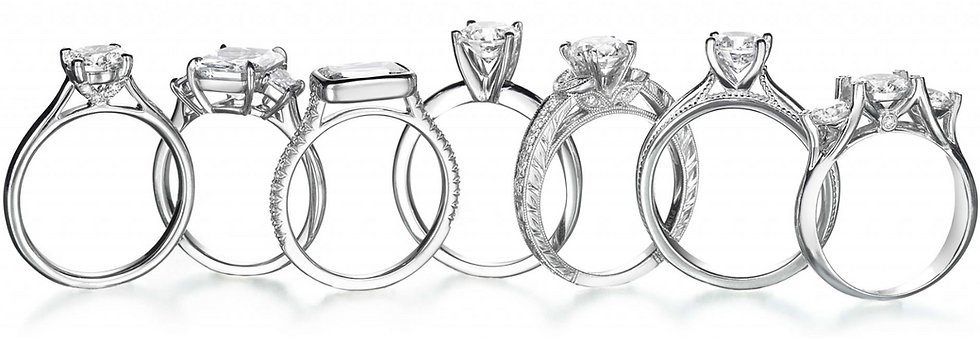An introduction to Platinum and Palladium Alloys
- Owain Houghton
- Aug 1, 2022
- 2 min read
Updated: Oct 22, 2022
Platinum and Palladium are comparably new metals to the jewelry trade. For platinum, we tend to be interested in 950 and 850 fineness alloys, with 5% and 15% of alloying metals, respectively. For palladium, there is most interest in 950 fineness alloys, although a 500 fineness alloy does exist.
Compared with Gold and Silver, platinum and palladium show complex interactions with many elements. Other elements show limited solid solubility, multiple eutectics, intermetallic/ordered compounds, immiscibility gaps, etc. Their phase diagrams are not as straightforward.
Alloy | Fineness | Typical Alloying Additions | Hardness / HV | Typical Melting Range / ˚C |
950Pd | 950 | Ru, Ru+Cu, Ir, W+Ru | 80–160 | 1300–1500 |
500Pd | 500 | 34Ag+Ru+W, | 130–190 | 1100–1200 |
950Pt | 950 | Ir, Pd, Au, Ru, Co, Cu, Ga+In+Cu, Ga+In | 50–190 (annealed) | 1500–1800 |
850Pt | 850 | Ir, Pd, Pd+Cu | 80–110 (annealed) | 1800–1800 |
Platinum Alloys
Because of their high fineness (8500 or 950), most platinum alloys are single-phase alloys, although some can be age-hardened (precipitates can form) due to the formation of a small fraction of precipitates.
Traditionally, most alloys were based on the platinum-copper system. Platinum-Cobalt alloys have become increasingly popular due to their superior flow and castability, and high hardness (due to precipitate hardening). Other alloys, such as 950Pt with 5% Ru, are also common.
The age-hardenable alloys contain gallium or indium, which has limited solid solubility in platinum of about 6% maximum but which drops to around 2.5% at lower temperatures. Heat treatment enables so-called age hardening, specifically the formation of Pt3Ga precipitates. This can lead to improvements in properties, but it can cause some issues in porosity.
Palladium Alloys
Palladium has similar phase diagrams to those of platinum and gold:
Silver is fully soluble in all compositions.
Gold, copper, rhodium, and platinum have significant solubility, while ruthenium has limited solid solubility.
There is little information on commercial alloys. Pd-Ru alloys tend to be the most popular. Ruthenium has limited solubility in palladium, so these are likely two-phase alloys.
Hardness values are comparable to platinum alloys, but their melting points are lower. Palladium also has a 500Pd hallmark, which has slightly higher hardnesses than the 950 alloys, lower densities, and narrower melting ranges.
Uses of Platinum and Palladium Jewelry
Platinum is a common and popular alternative to white gold. It does not tarnish like white gold, is hypoallergenic, and is regarded as more durable than white gold. It is commonly used for engagement rings as the setting in platinum is far more durable. However, platinum jewelry is more expensive because it is far denser than gold, and so more platinum is needed to make jewelry of the same size. Palladium shares many features with platinum, although is far less dense (jewelry is very light) and more expensive!
Cover photo from Platinum Guild International.











Comments